Agrius convolvuli
(Linnaeus, 1758)
-
 Subfamily: Sphinginae - Acherontiini
Subfamily: Sphinginae - Acherontiini -
 Wingspan: 80-110 mm mm
Wingspan: 80-110 mm mm -
 Flight period: May - Sep
Flight period: May - Sep -
 Spread: Common
Spread: Common -
 Host plants: Convolvulaceae
Host plants: Convolvulaceae
Information
The Agrius convolvuli also called Convolvulus Hawk-moth' is a moth of the Sphingidae family with a wingspan of 80-110 mm.
It is found throughout Europe including Iceland. *
Its range includes Europe, Asia, Africa, Australia and New Zealand, partly as a migrant. ***
In Italy it is also found in the islands. *
The Agrius convolvuli has the basal color of the front wings streaked in various shades of gray with dusting of ocher, an almost black line always visible,
internally bordered in white and with a non-linear trend that starts from the apex to end in the postdiscal region.
While in the females the coloring of the wing is almost uniform, in the males it is visible
a darker band measuring about 1/3 of the wing, not well defined, which crosses the wing starting from the costa to almost the inner edge.
The hind wings are light gray with darker wide transverse lines. ****
Head and thorax are in the background color of the front wings while the abdomen has a broad gray dorsal stripe and pink and black bands edged in white on the sides.
The spirotromba can reach 10 cm in length.
Bivoltine species has the first generation that flies in May / June, while the second between July and September.
The specimens of the first generation appear at the same time as those in inflow from the southern areas intent on their migration.
It lays the eggs singularly on the host plant while it is in flight and gluing them directly on the leaf.
This sphinx is very prolific and the female can lay up to 200 eggs.
The incubation is quite short and after about 10 days small greenish caterpillars appear.
The newly laid eggs are bluish green and almost immediately turn yellowish.
The larva grows very quickly reaching in a short time even 12 cm in length and a diameter of 1.5 cm.
It has a very variable color ranging from a widespread blackish brown, to an intense and sometimes very light green up to a brownish yellow. **
on the last segment of the body there is a long and harmless stinging horn that should give the back the appearance of a second head.
In fact, it has the sole purpose of deterrence against attacks by predators.
The chrysalis is up to 6 cm long and is yellowish brown with a particular characteristic that makes it unique:
the spiritromba is detached from the body and is encapsulated in a narrow case in the shape of an umbrella handle. **
The caterpillar is often parasitized by some Ichneumonidae and Tachinidae. ***
The larvae feed mainly on Convolvulaceae, such as Calystegia sepium, Convolvulus sp., Convolvulus arvensis and Ipomea but can also be found on Polygonaceae such as RUmez sp ..
He particularly loves the Hypomea grown in gardens.
* Lepidoptera mundi https://lepidoptera.eu/ - Fauna Europea https://fauna-eu.org/
** Bestimmungshilfe für die in Europa nachgewiesenen Schmetterlingsarten - http://lepiforum.de/ -
*** "Agrius convolvuli (Linnaeus, 1758)". www.nzor.org.nz. Landcare Research New Zealand Ltd.
**** Hampson, G. F. (1892). The Fauna of British India, Including Ceylon and Burma: Moths Volume I. Taylor and Francis
***** Monaco Nature Encyclopedia - https://www.monaconatureencyclopedia.com/agrius-convolvuli/

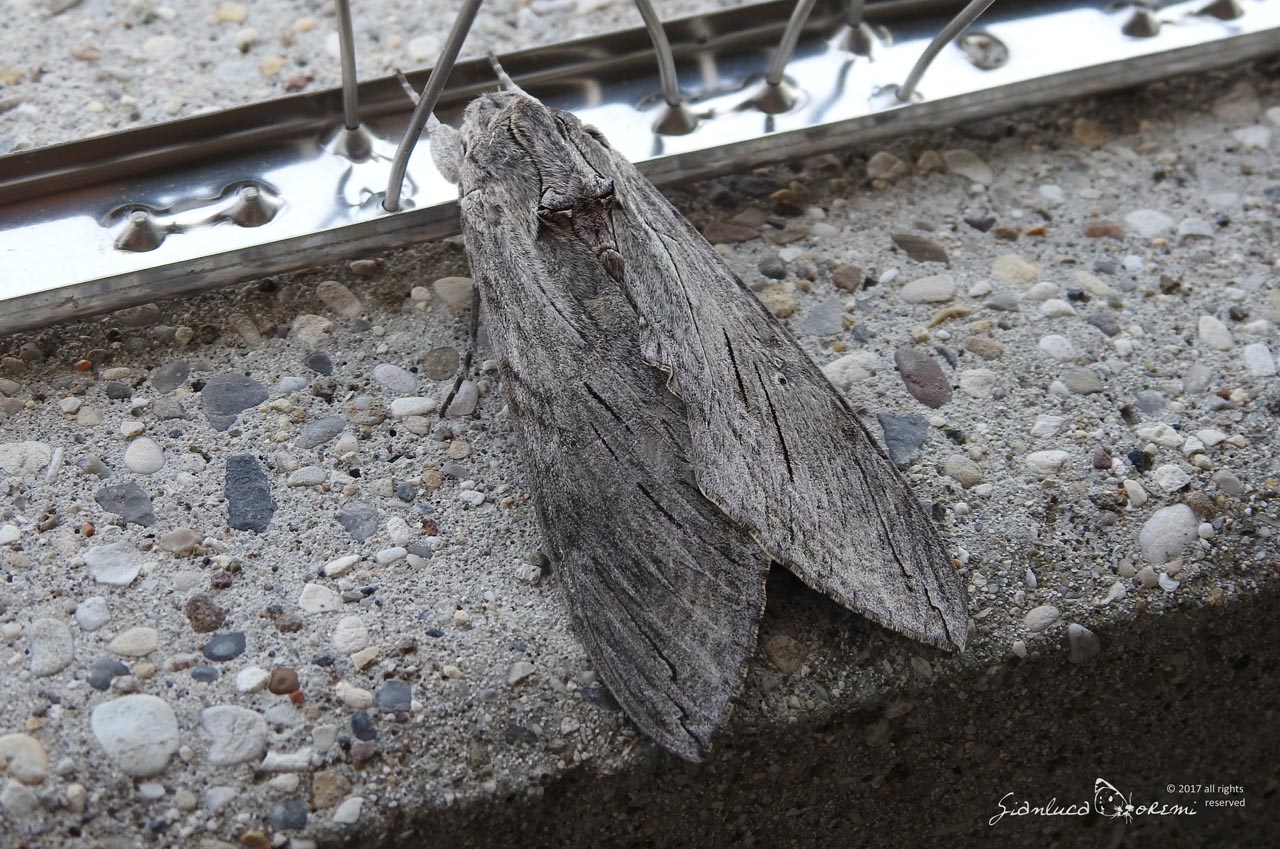
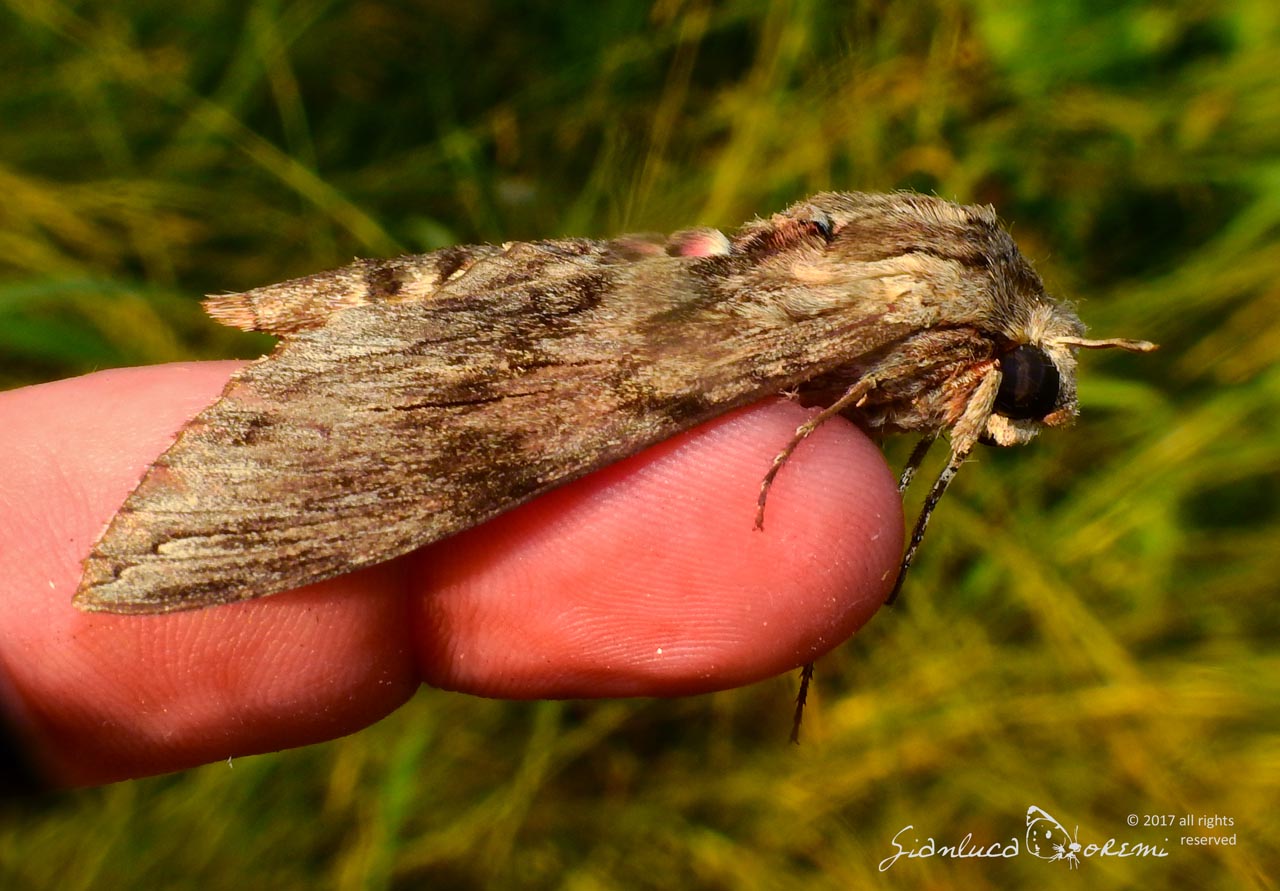
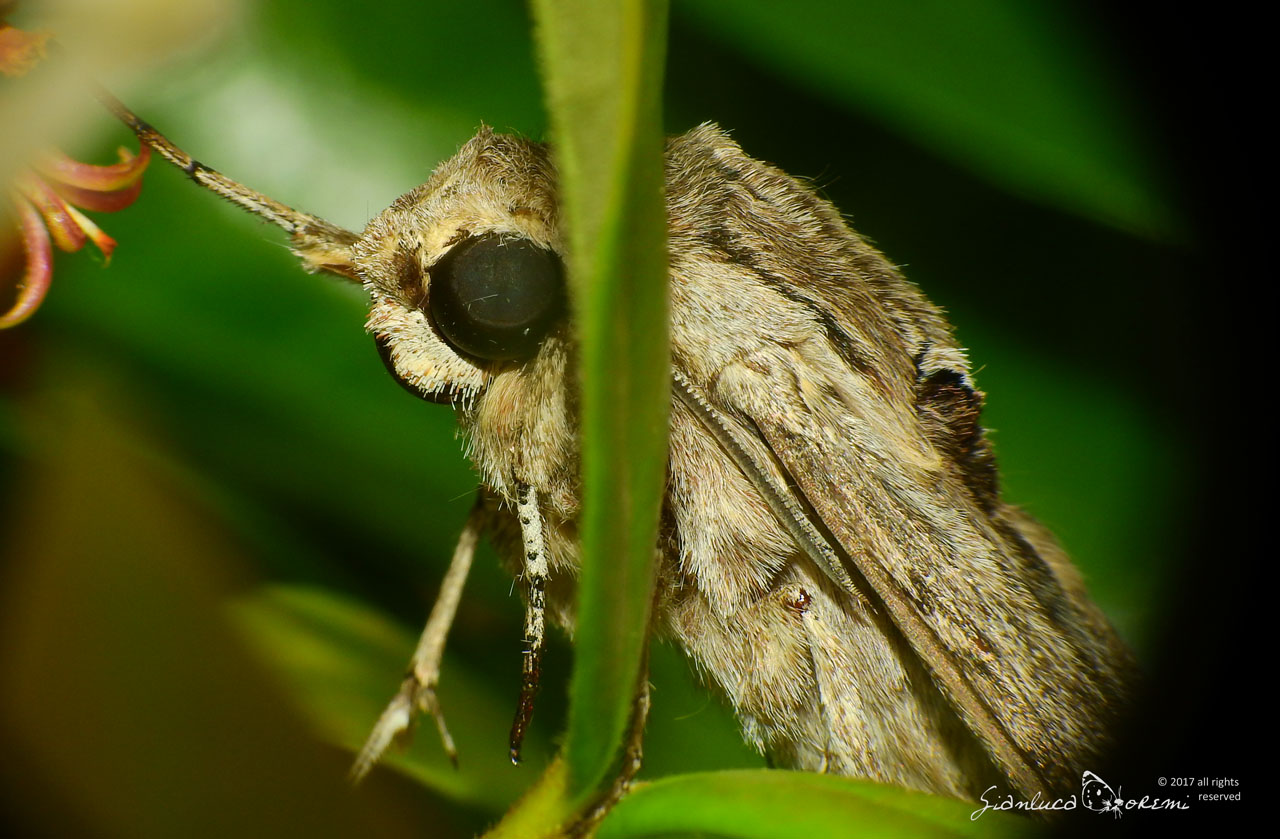
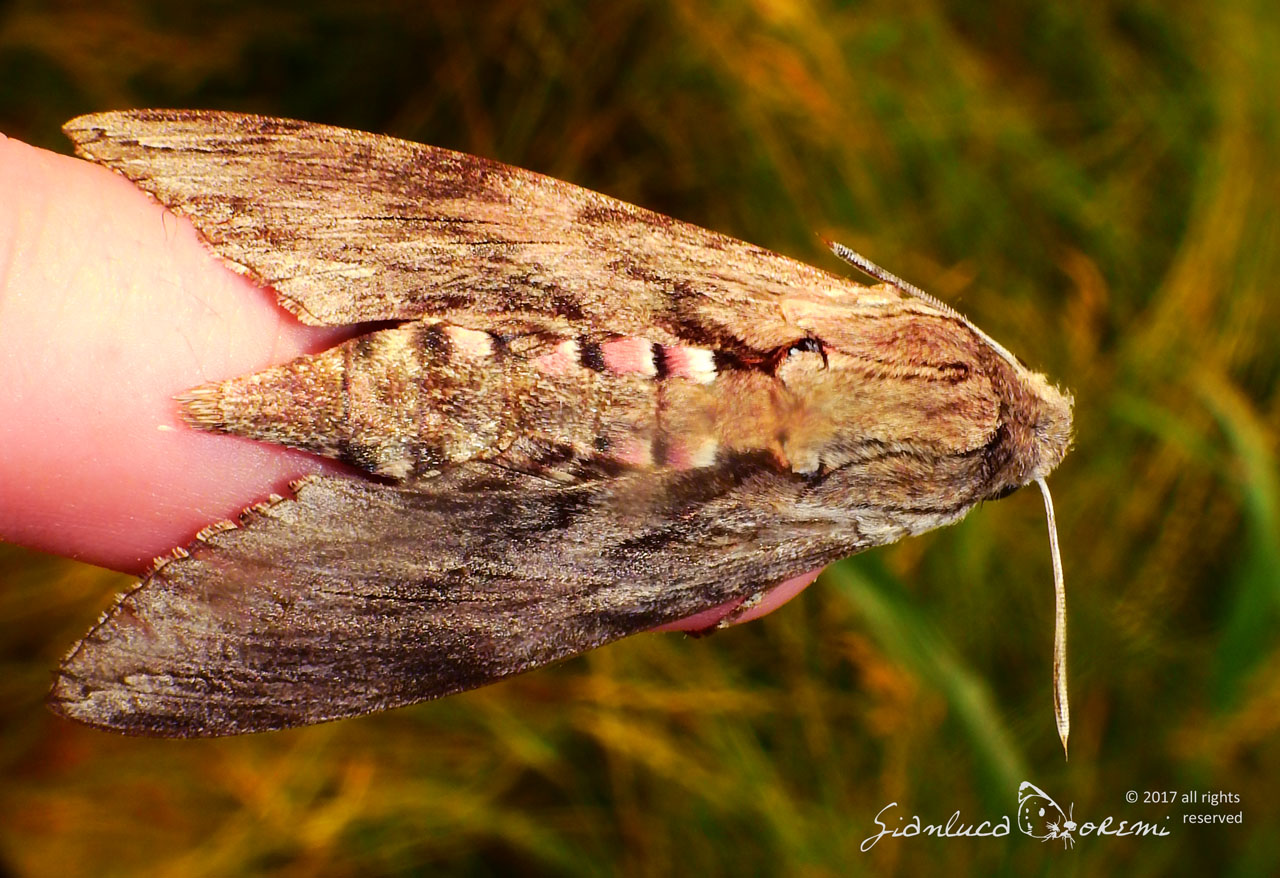
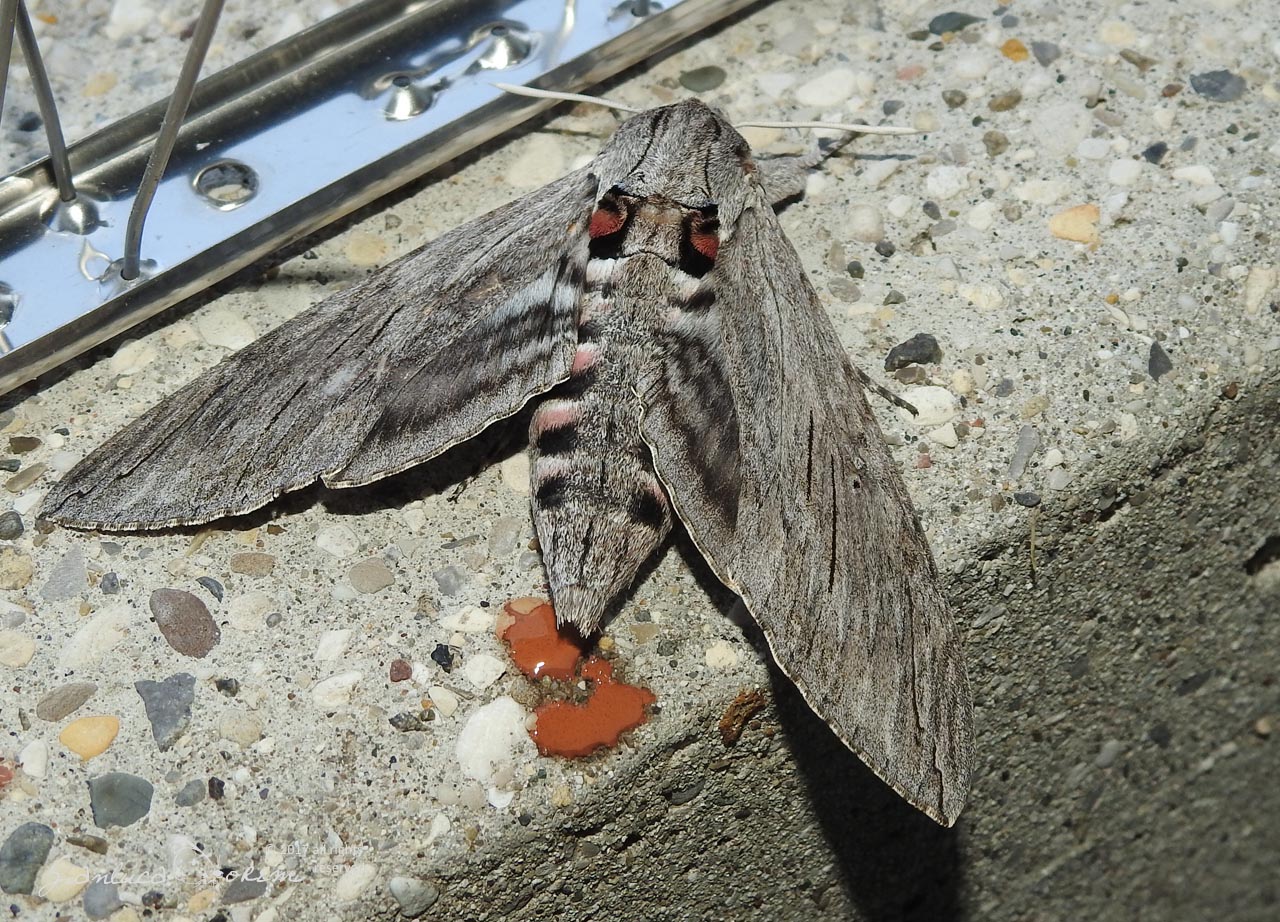
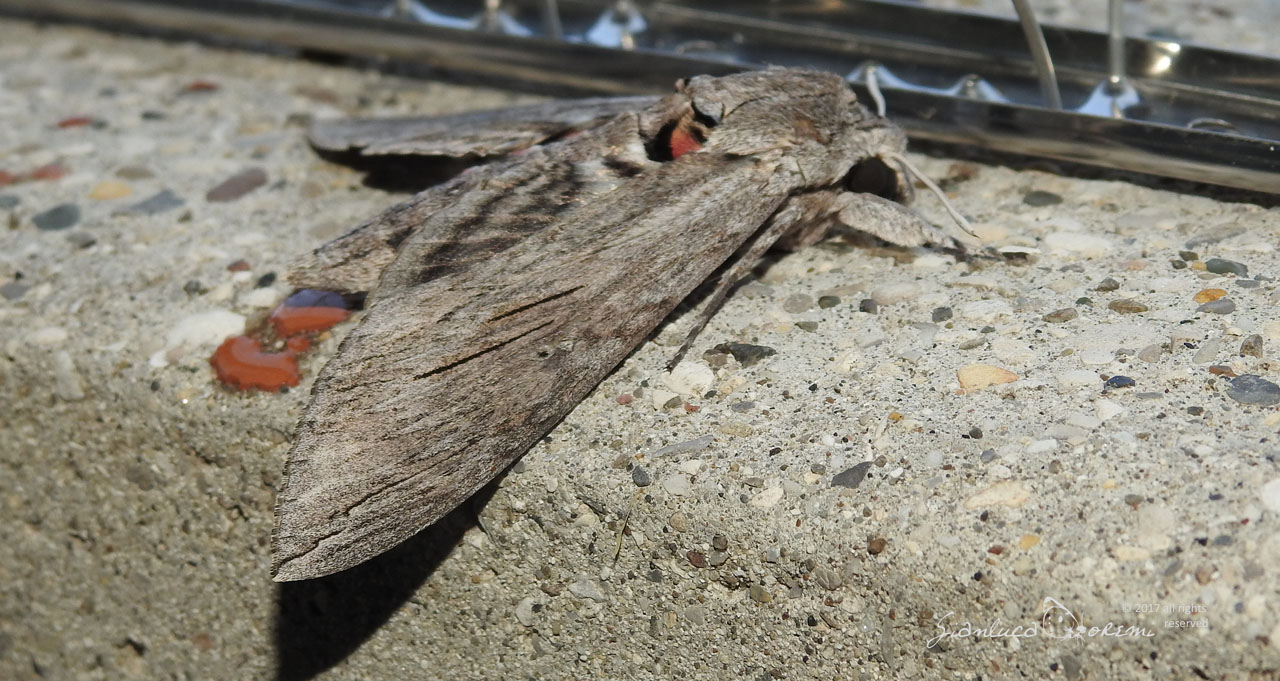
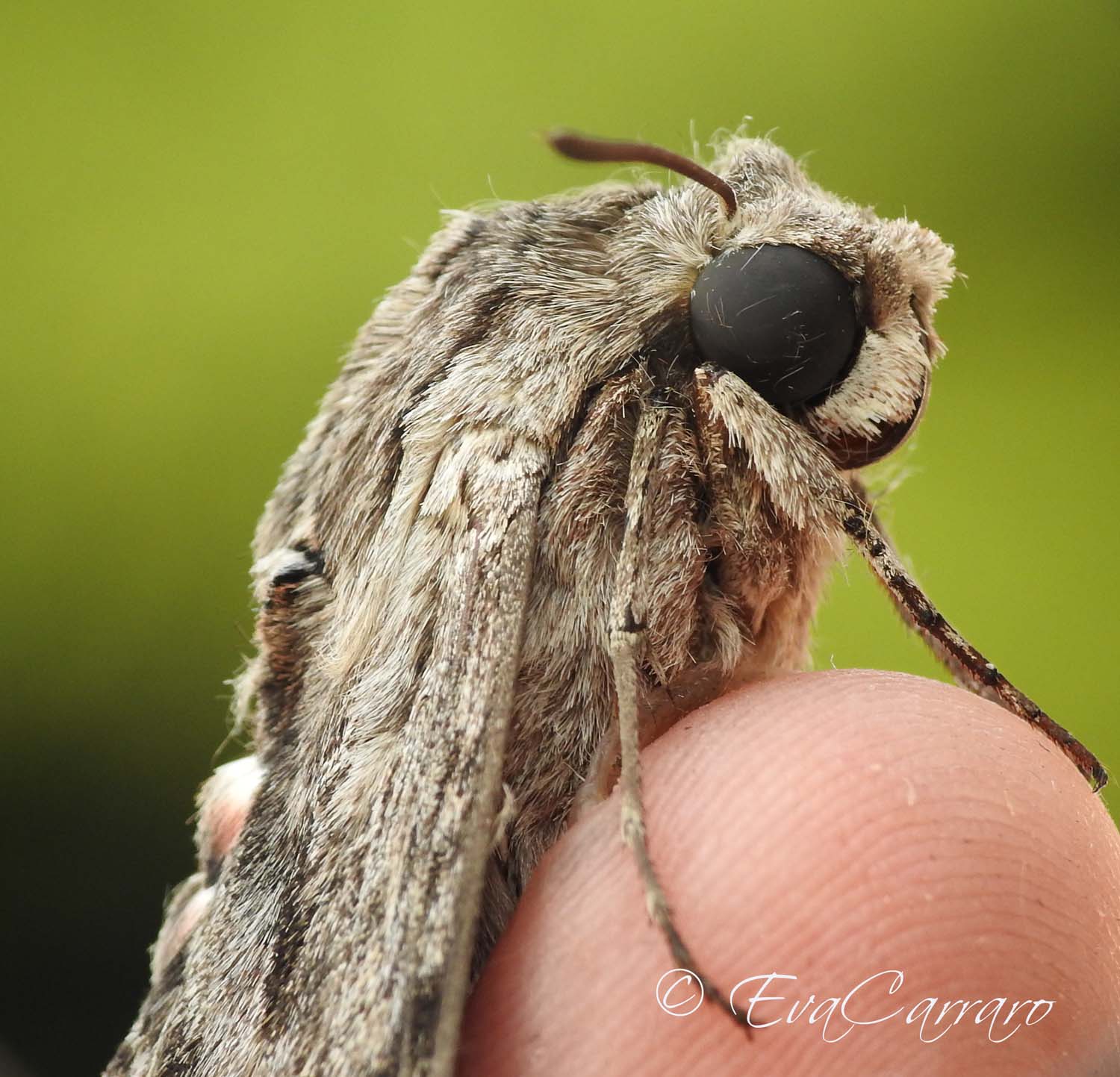
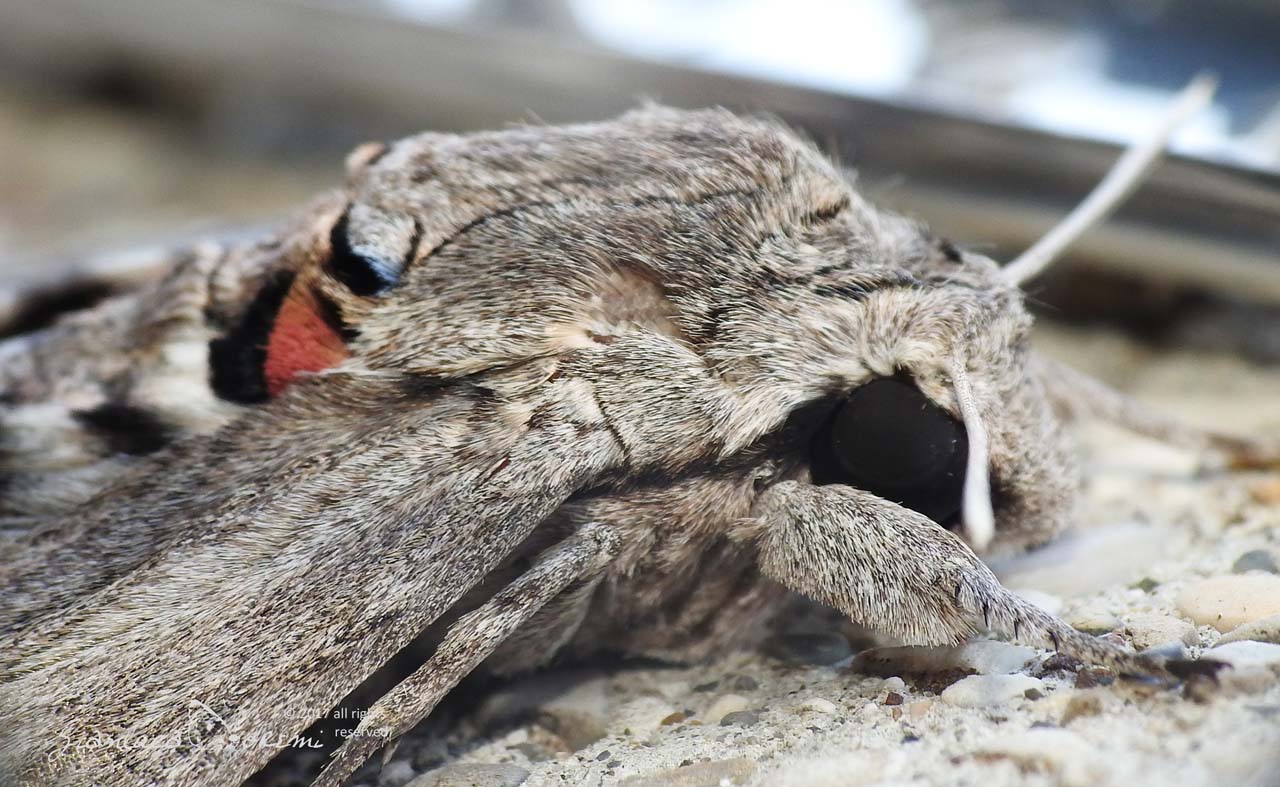
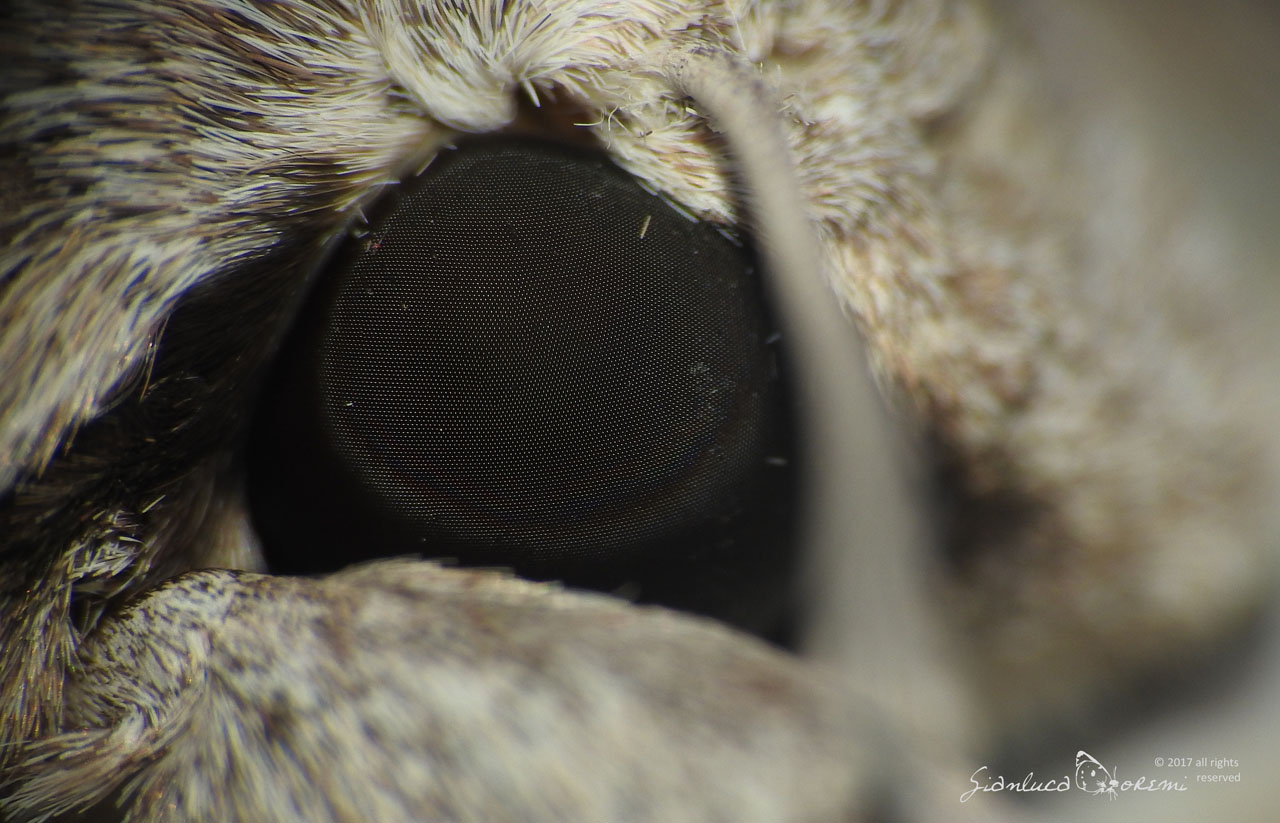

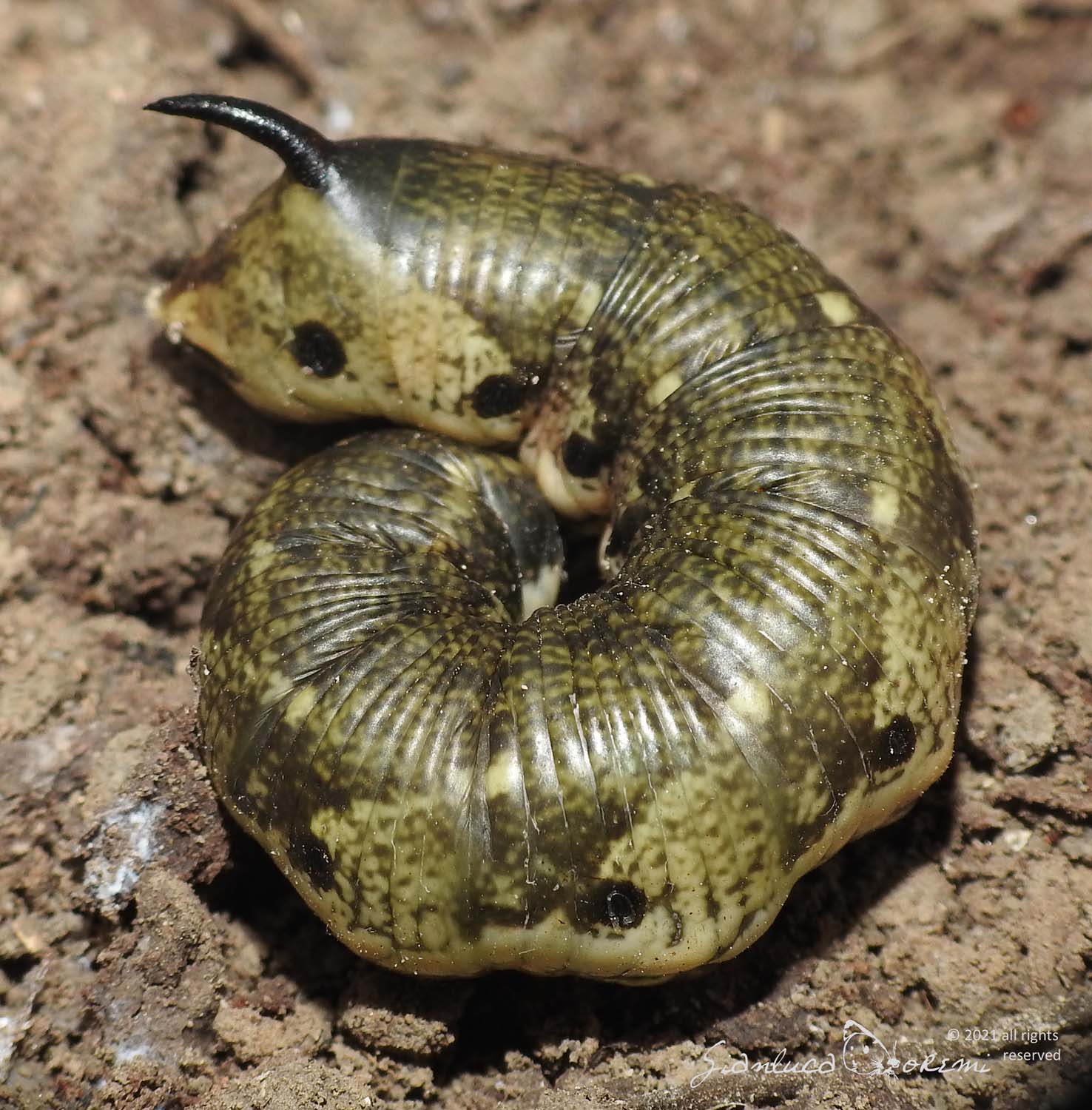
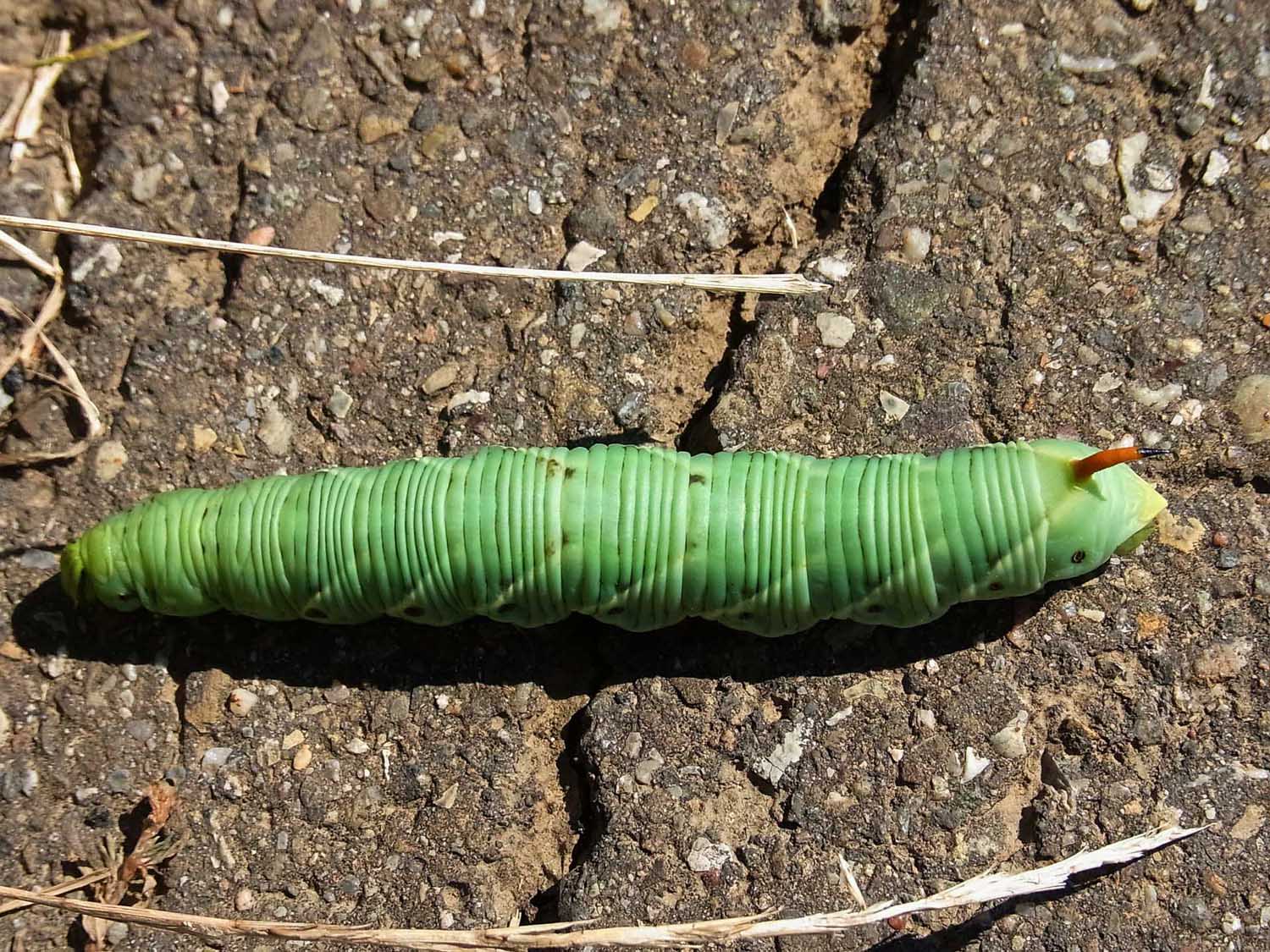
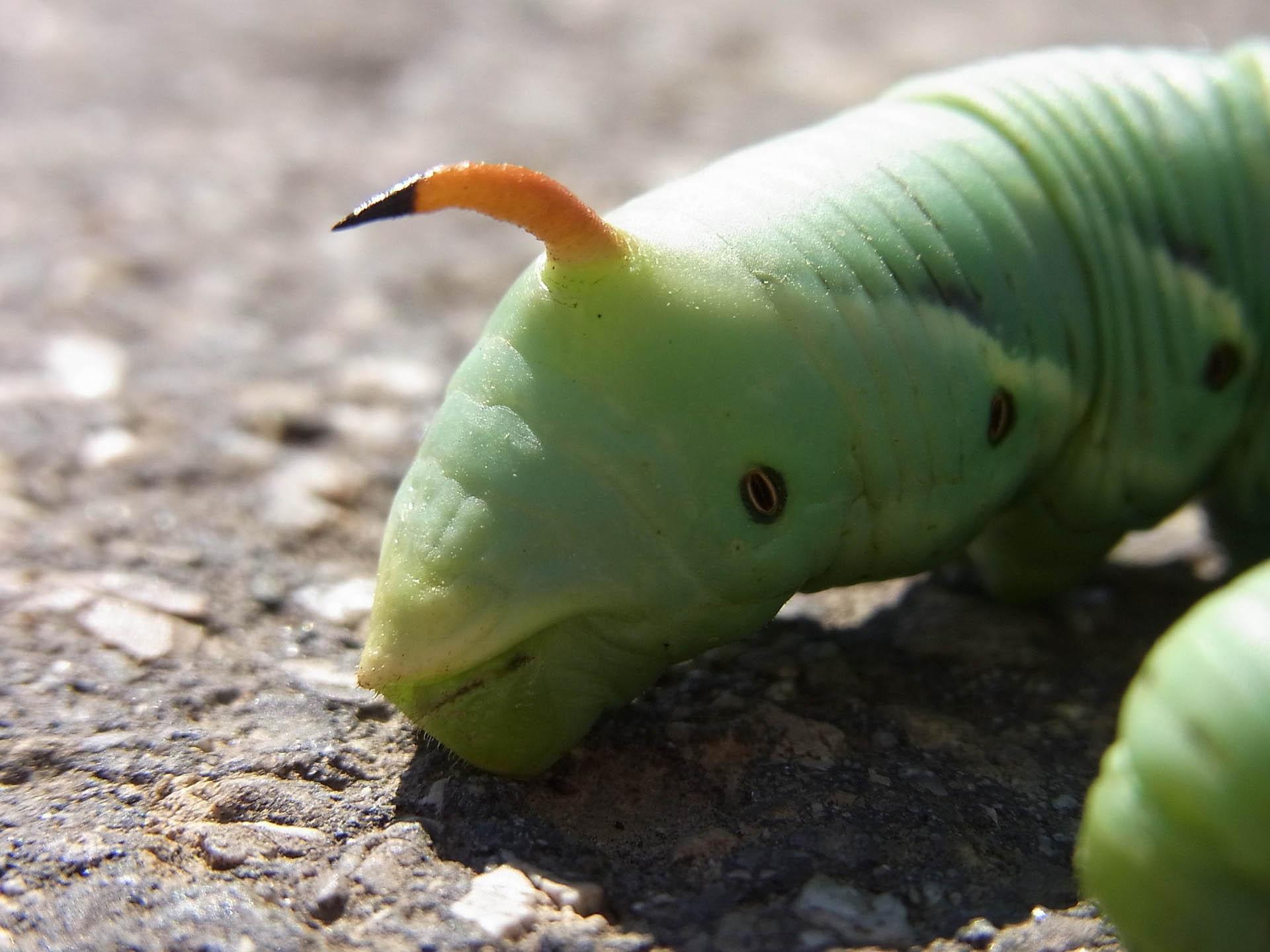
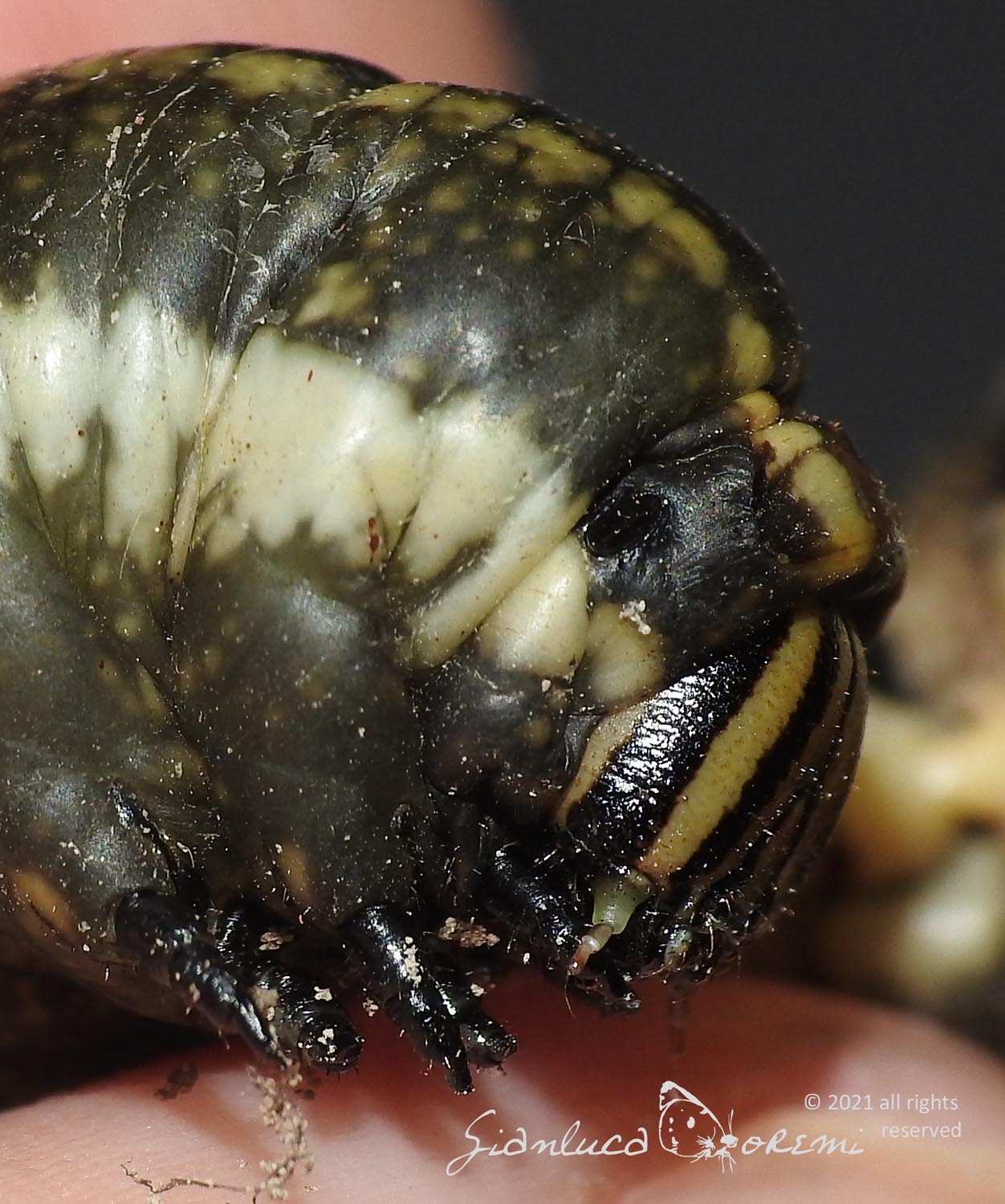

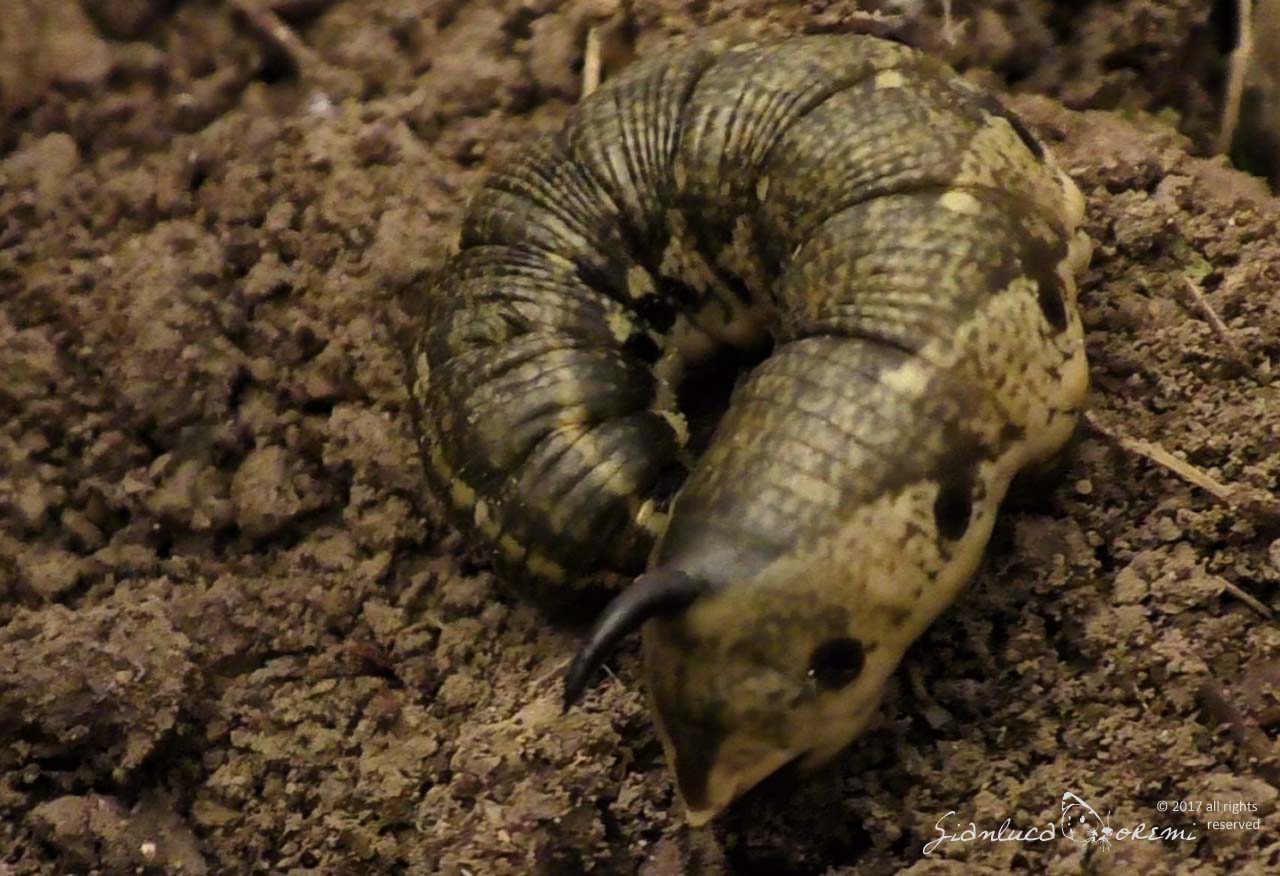
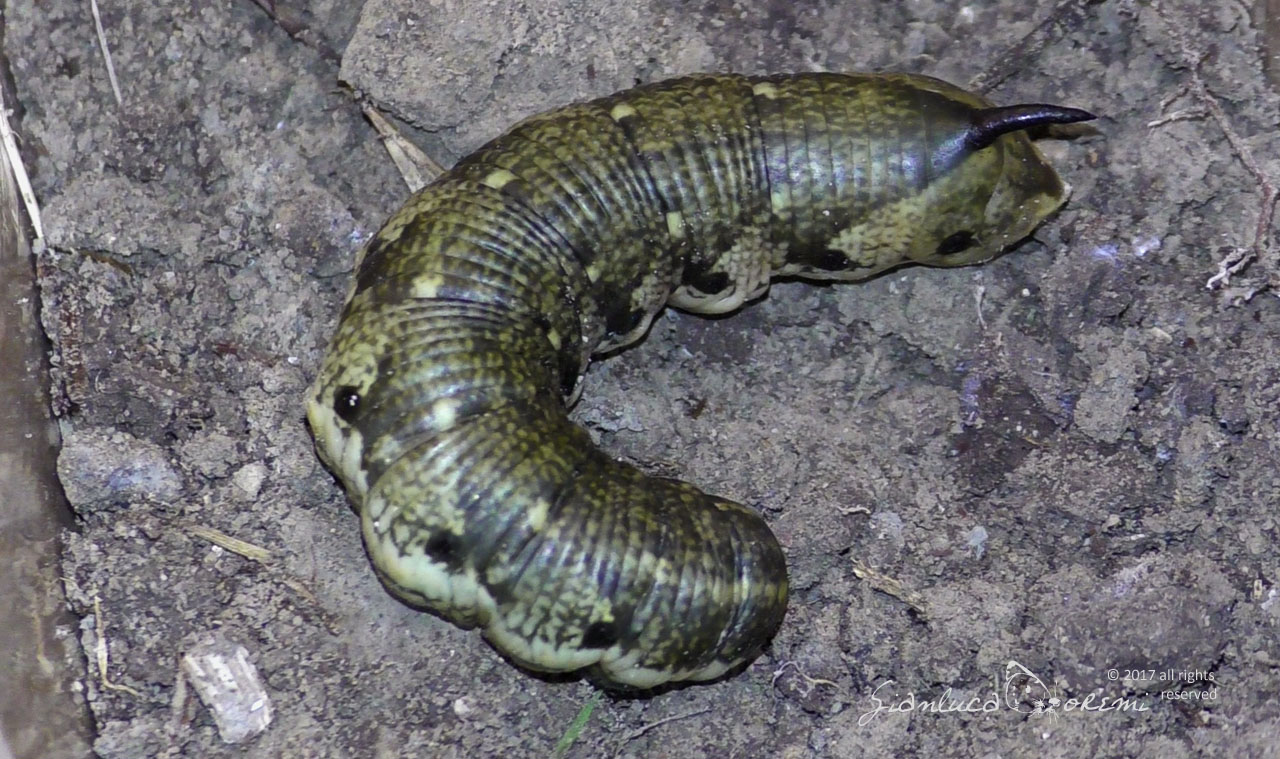
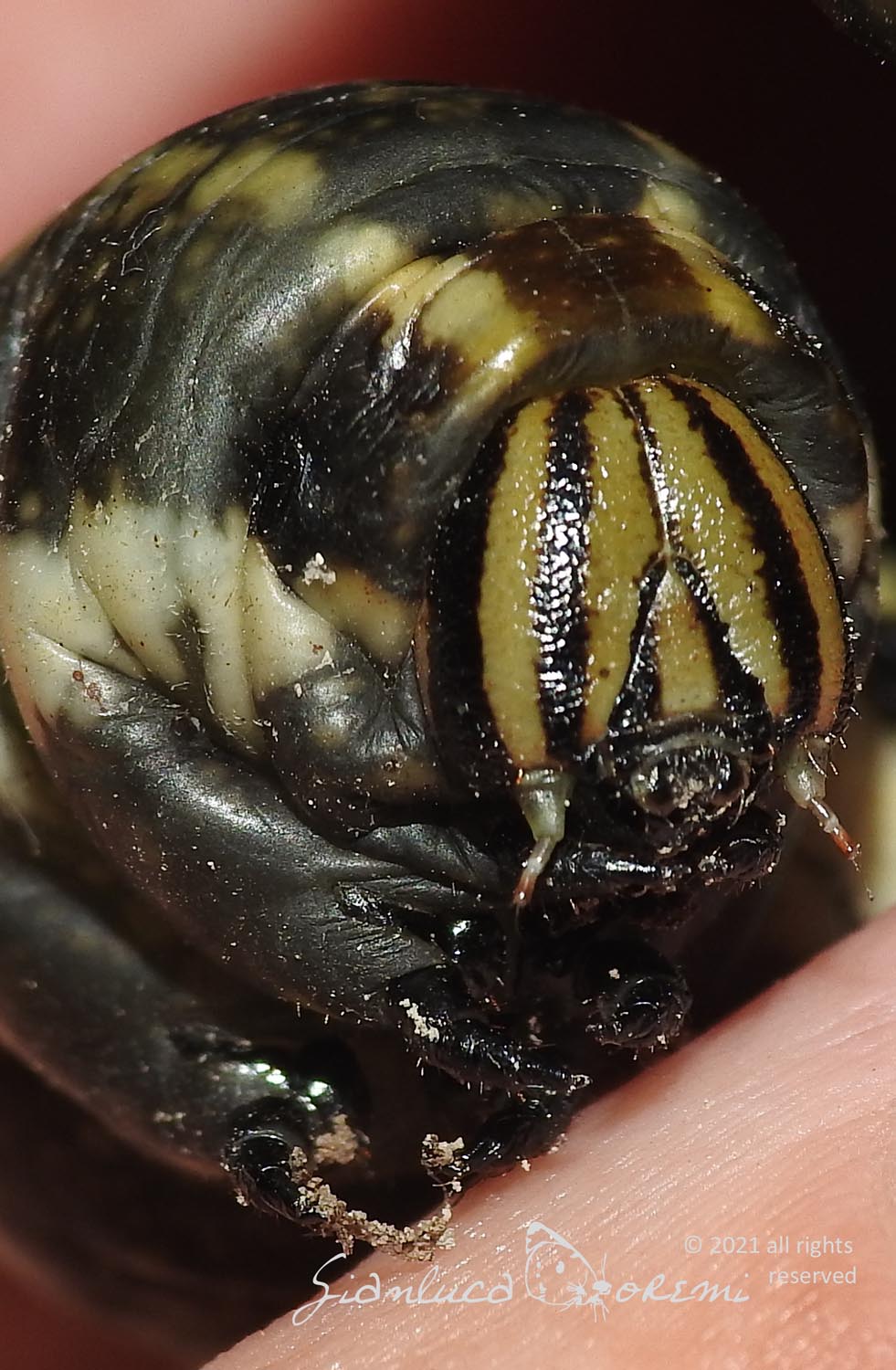

 EN
EN ITA
ITA
Social and publications